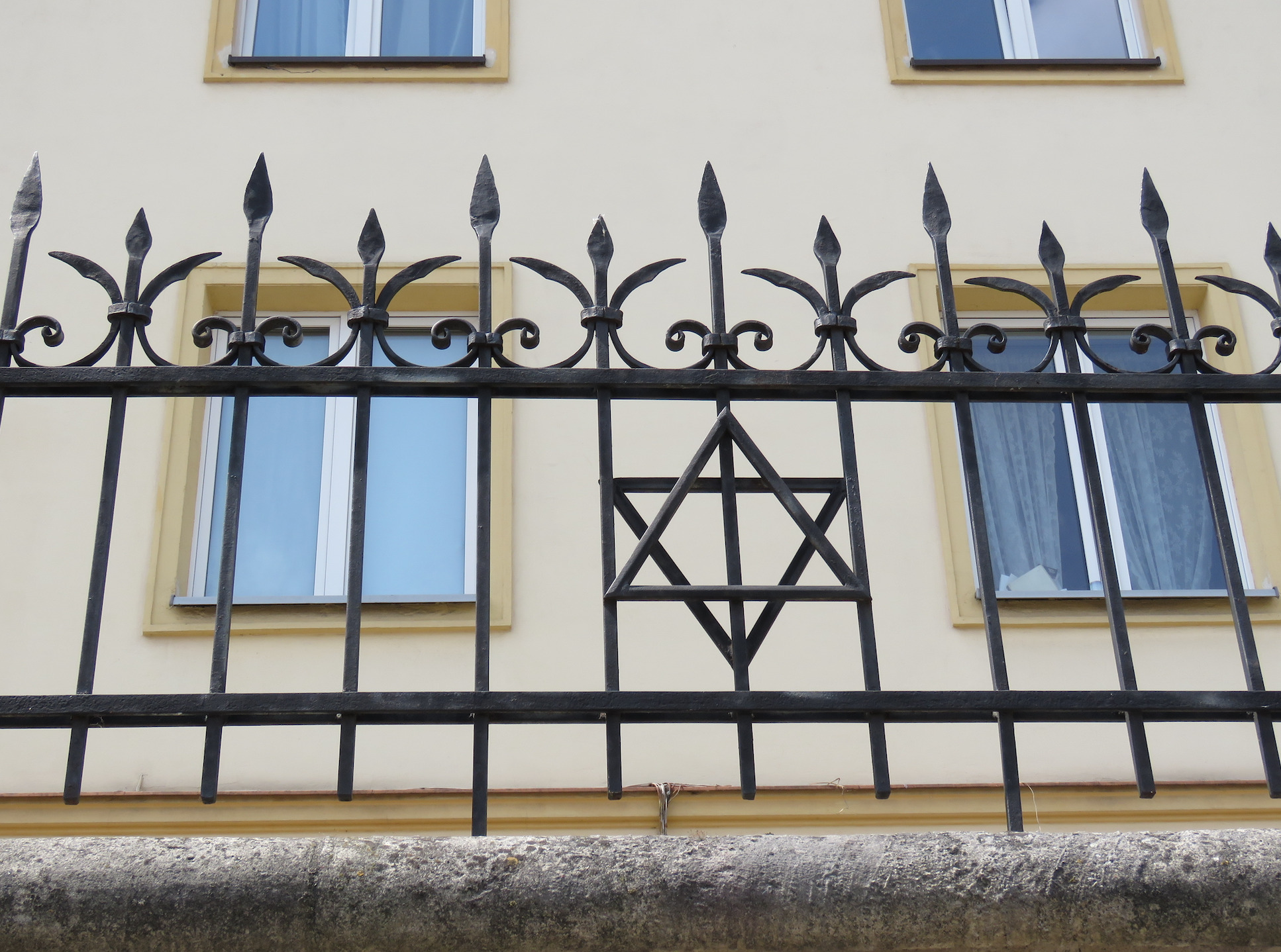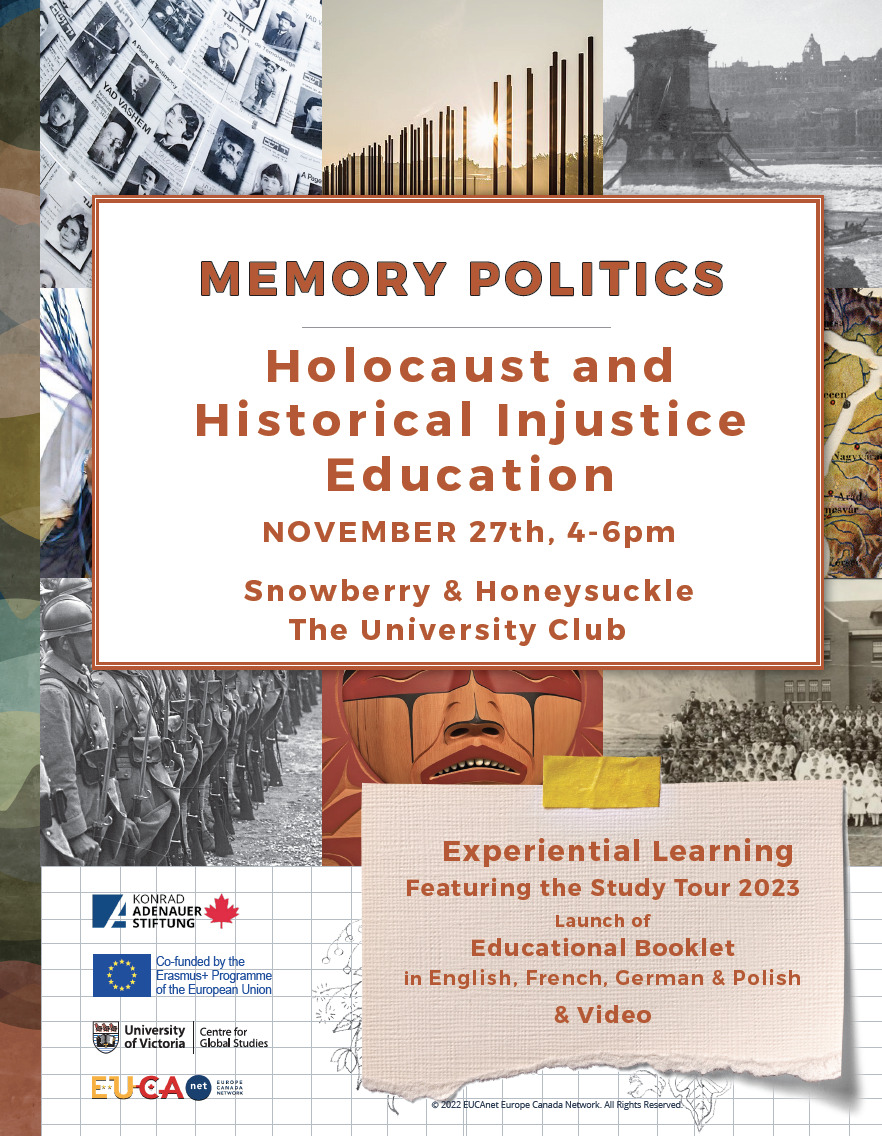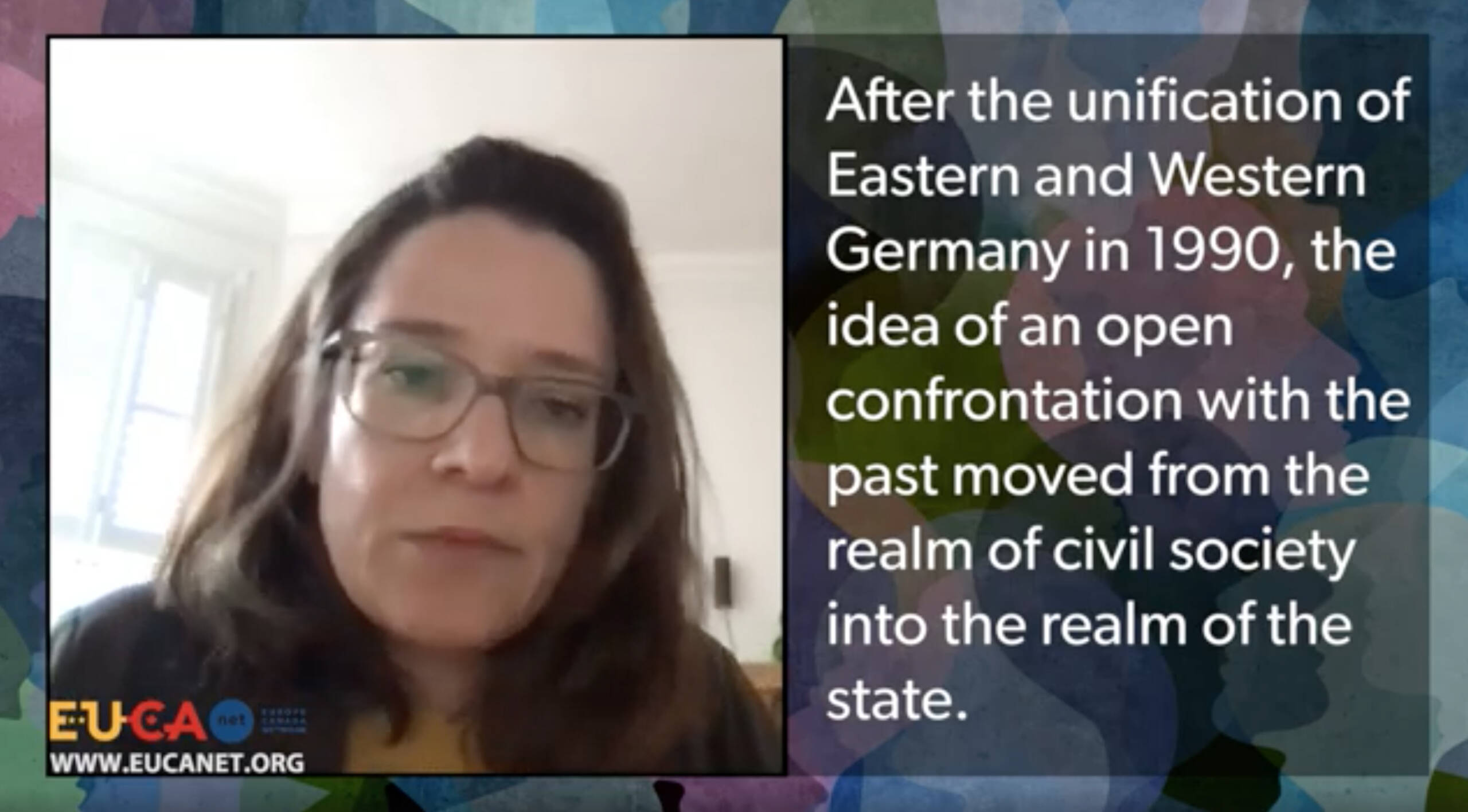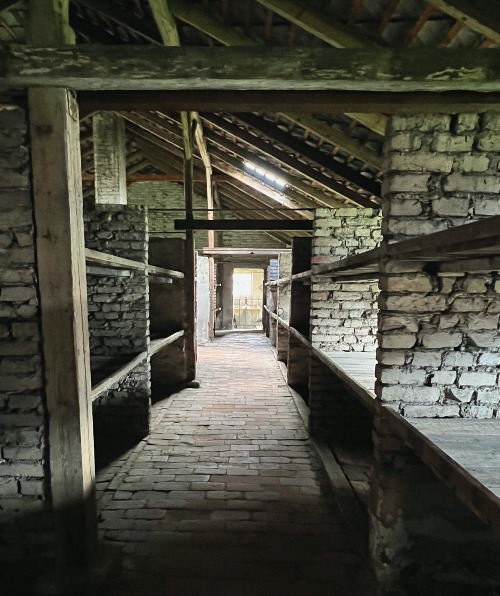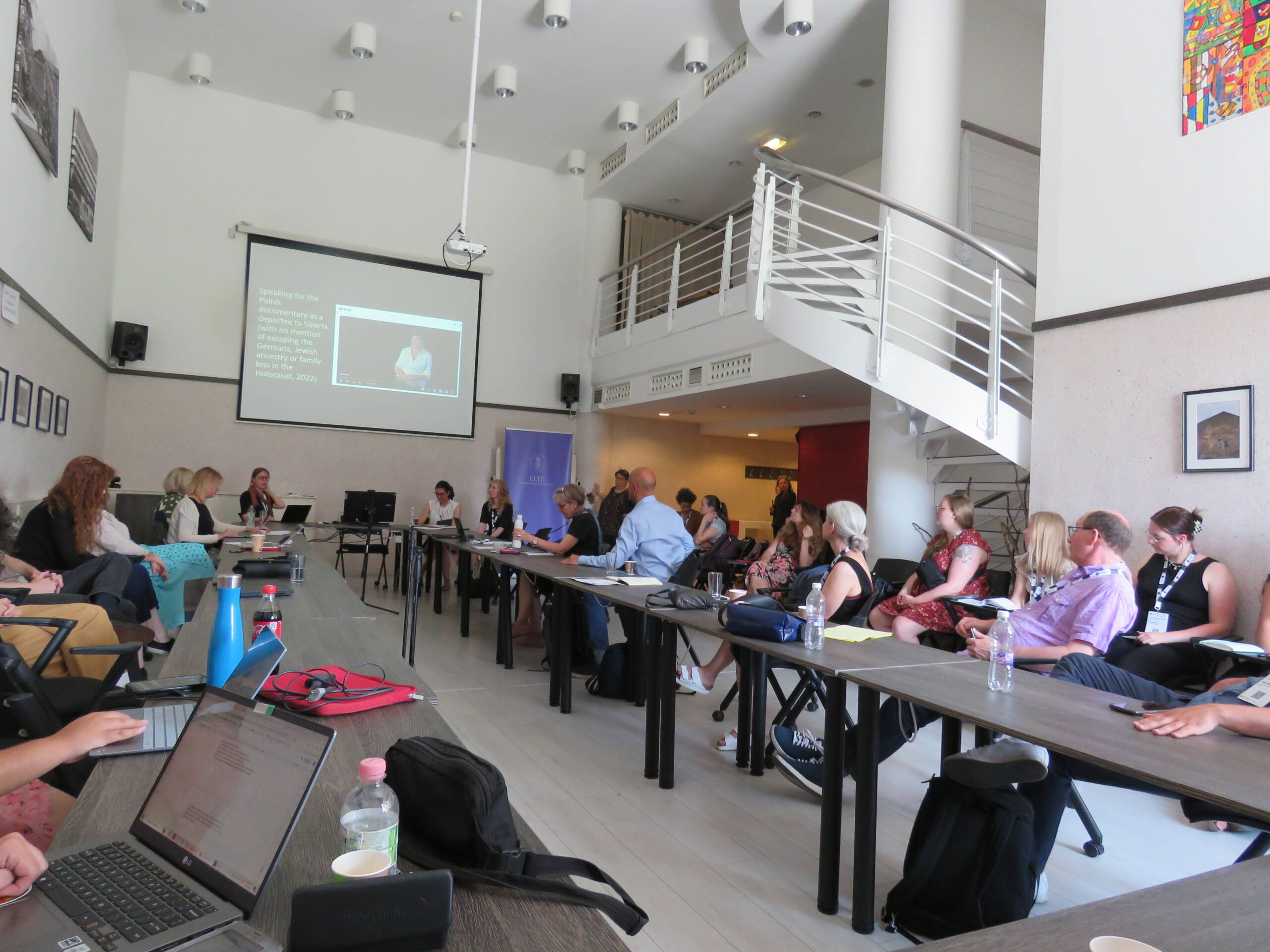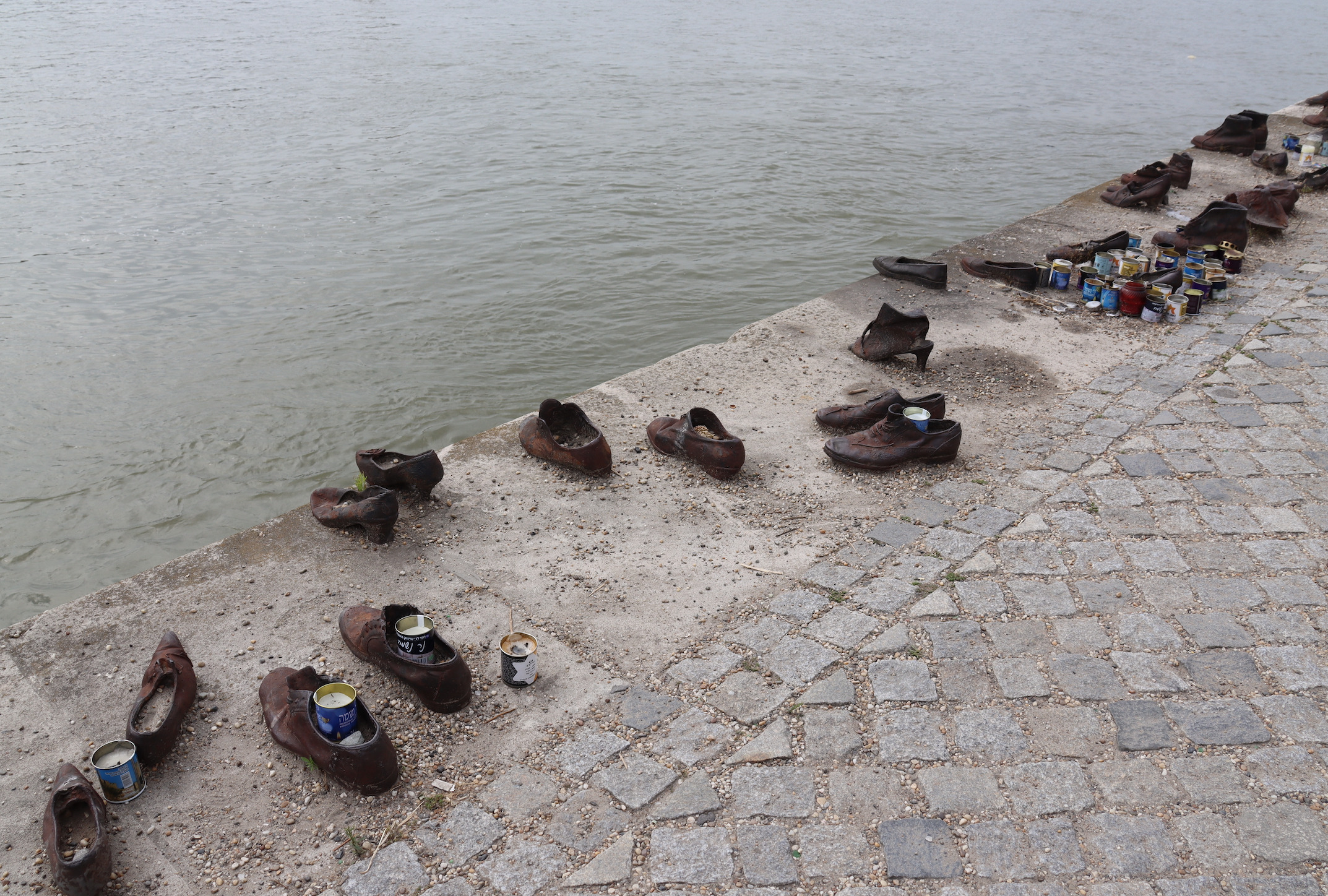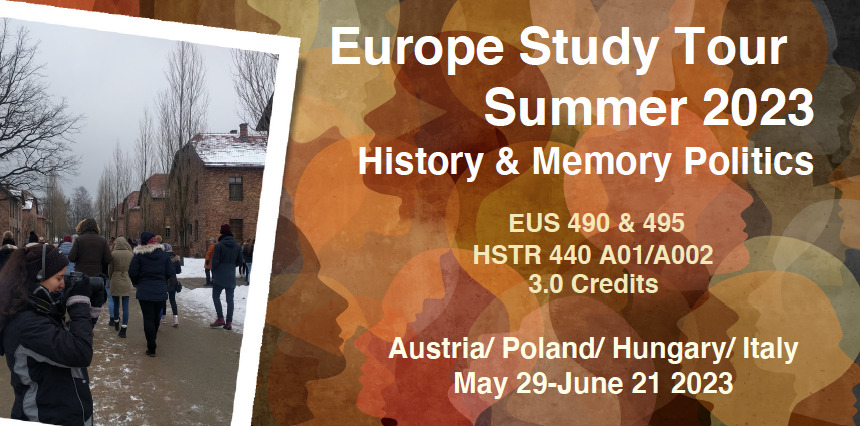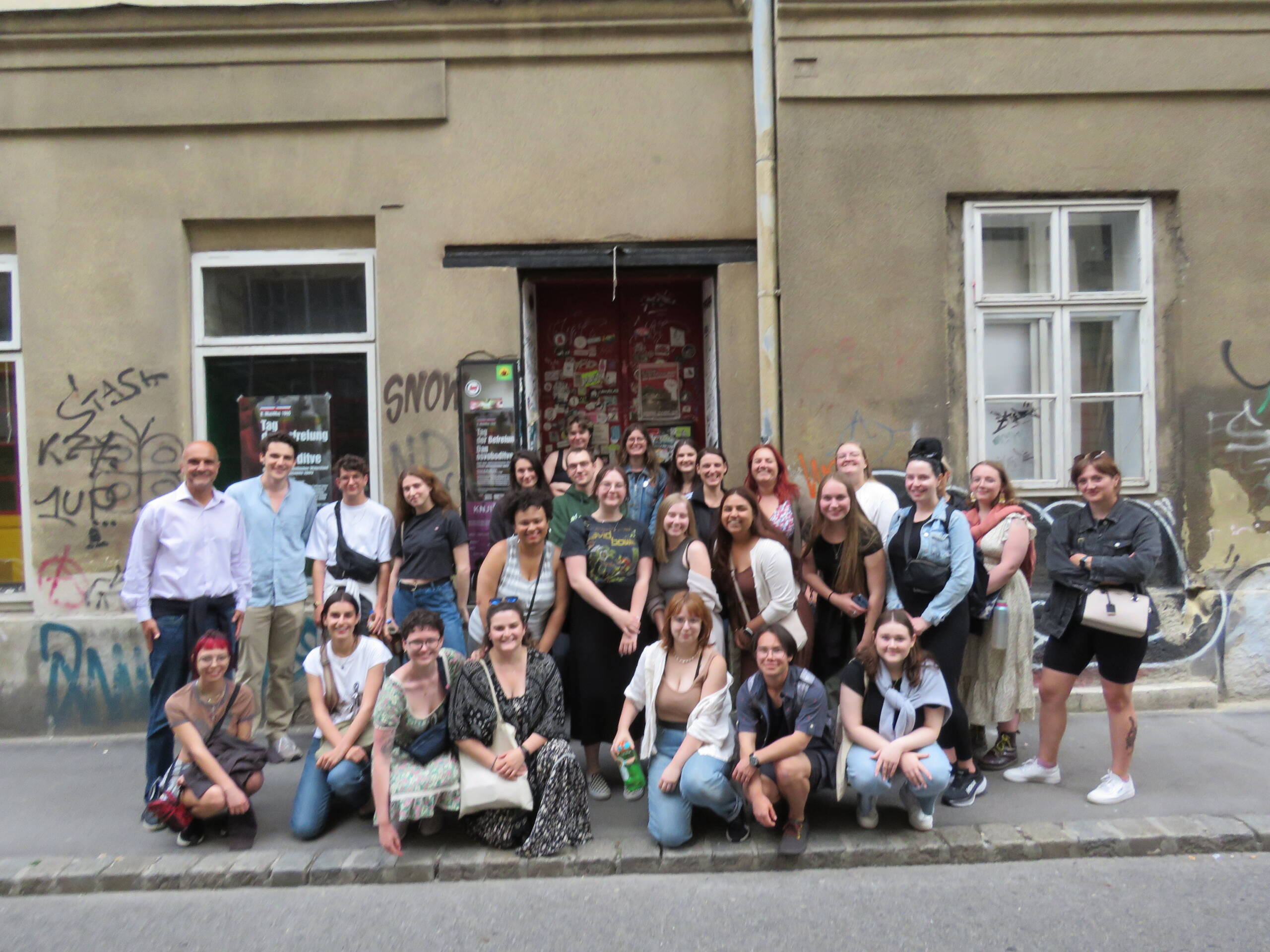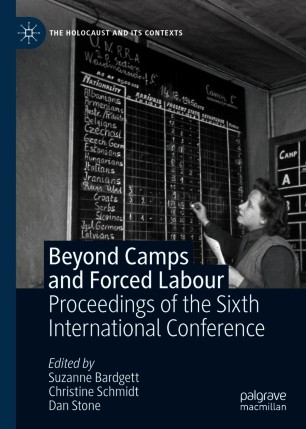From Munitions Factory to Constructed Memory- The case of Schindler’s Factory Museum in Krakow
Prior to leaving Poland, the Study Tour in European Memory Politics took advantage of the opportunity to explore Krakow for the day. We started by meeting with a member of the Jewish Galician museum, and proceeded to explore Kazimierz – Krakow’s Jewish Quarter! The incredibly passionate and knowledgeable guide detailed sites of memory highlighting pre-war Jewish life, providing students with an opportunity to dive deeper into Poland’s Jewish history.
As the tour was wrapping up, we found ourselves standing in the middle of Zgody square where a former Jewish ghetto was created by the Nazi’s in World War II. For those who don’t know the history of the Nazi occupation in Krakow, the square appears to be home to a modern art installation. Placed on top of uneven cobblestones, thirty chairs fill the square, with each meant to memorialize one thousand lives.
A key feature of the installation is the direction each chair faces. With the majority facing the same direction, symbolizing the journey to concentration and extermination camps, it is easy to miss a select few facing different directions. Two chairs immediately caught my eye and I could sense immediately the chairs held multiple layers of memory for the victims of Nazi persecution. The first, facing towards an alley used for immediate on-site execution, and the second pointed towards a former factory owned by Oskar Schindler.
As the tour closed, I found myself drawn to following the path towards Oskar Schindler’s factory. Made famous by Steven Spielberg’s 1993 film Schindler’s List, I arrived at the factory with a preconceived idea of how the factory would be represented by museum curators. Originally, I had envisioned a site that would perhaps tell a story of the only person to have been a member of the NSDAP laid to rest at Mount Zion in Jerusalem or possibly portray a broader narrative representing the Righteous Among Nations in Poland. Rather, I found myself standing in an interactive Museum depicting life in Krakow both before, during and after occupation.
Thinking of museums, the role they play in spreading information about the past and aiding in the formation of memory at the institutional level, spending time at Schindler’s factory offered a contrasting experience of memory in Poland from the Auschwitz memorial we had just spent two days visiting. Although the representation of the Jewish community and their experience clearly exists, visitors also have an intensive experience of walking through Krakow during the occupation as a non-Jewish Pole. References are made to sacrifices made by Polish women and vivid images of persecution of the Polish intelligentsia command attention, both through visual and audio aids. Viewing multiple installations, I found myself concerned about the potential for individuals with little understanding of the Holocaust and the long pre-war history of anti-semitism to cultivate an image of Jewish suffering as somehow tolerable or perhaps a footnote of the crimes committed during Poland’s brutal occupation.
Perhaps the most unnerving aspect of the museum was the abundance of Nazi memorabilia. Walking through the site, I navigated my way through a sea of red Nazi flags, came face to face with SS guns and uniforms, a collection of dolls and puppets in Nazi apparel and even had the chance to collect stamps based on “milestones” throughout World War II, such as liberation.
In a daze from the journey through Krakow’s memory of the war and Holocaust, I finally came to the end of the tour and stood face-to-face with a larger than life portrait of Joseph Stalin. While it was clear that the museum had carefully created the visitor experience, I left the museum questioning the ethics of curating Holocaust memorials.
Alicia Ward is currently a MA student at the University of Victoria in the department of Germanic and Slavic studies under the supervision of Dr. Serhy Yekelchyk. Her thesis examines the politics of Holocaust memorialization in Ukraine. Alicia received a BA in History from the University of Victoria.
